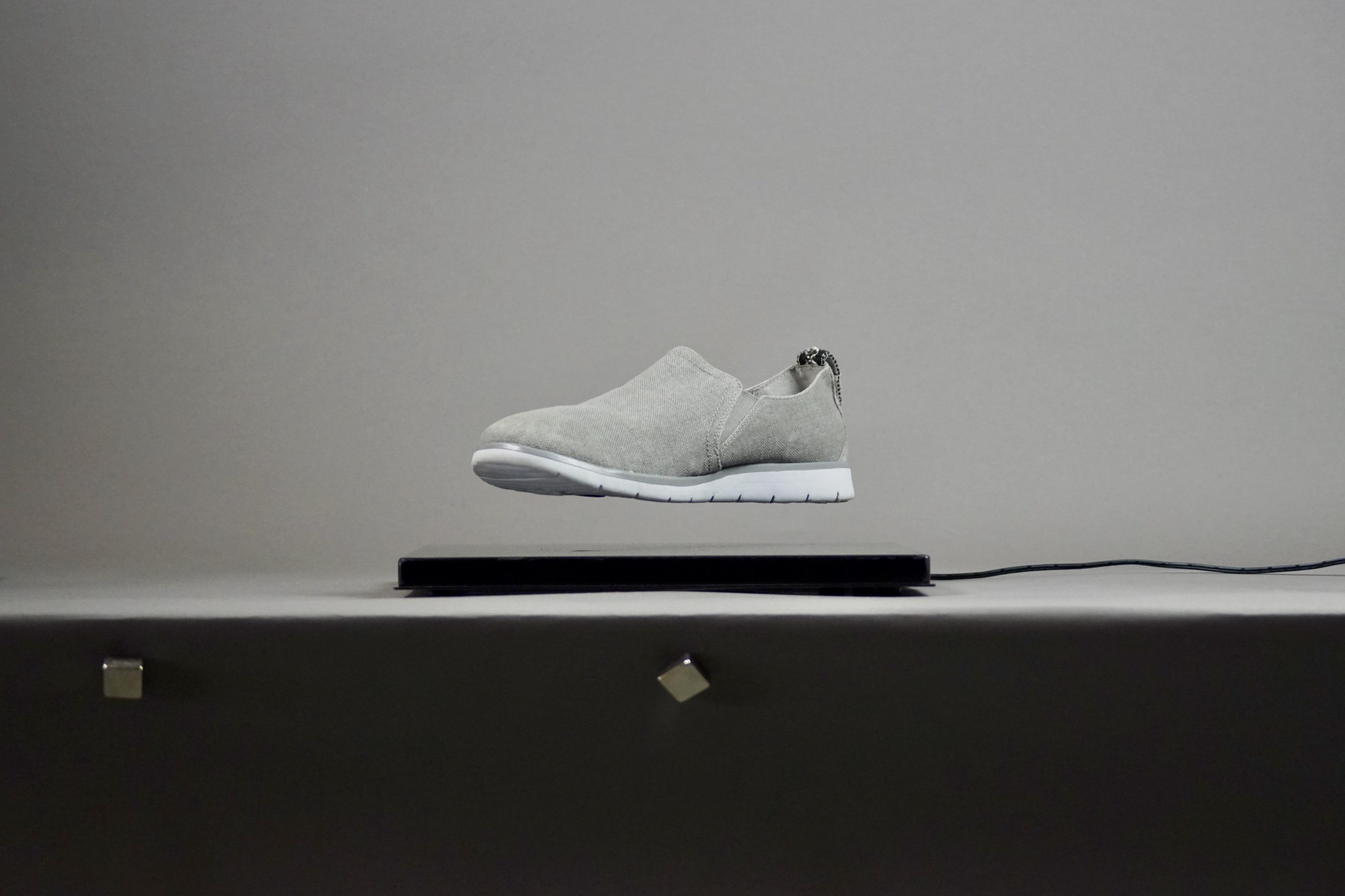
Floating shoes, lamps and even a real hoverboard; by using magnetic levitation, the Eindhoven-based Crealev has been working on modules that can float almost any object. What started as a father-daughter business ten years ago has developed into a company with a broad customer base. Despite the fact that the company has been operating in the background, several multinationals such as Apple, Lexus and Nike have already used their products. We spoke with Goof Seijkens about the company’s origins, the technology behind it and the various types of applications.
“Technical research and development”; that is how founders Ger and Angela Jansen described their activities in 2006, during their registration with the Chamber of Commerce. Father Ger was still working at Philips at that time and was granted the freedom to invent new techniques. Not knowing what was to come, he specialised in floating techniques. At the time, his daughter Angela studied at the Design Academy, says Seijkens: “She came up with the idea of developing a lamp, and because Ger was working on the floating technology, they combined the two ideas. Thus they started producing lamps of which the upper part of the hood is floating. “After a while, what you get is that other companies approach you with the question whether you can also let their products float.”
“Of course we can. We leave out the lamp and only use the module.” The ever-increasing demand has resulted in a range of five different levitation modules. “These consist of a number of parts; you see both a base and a floating disc. Both contain coils as well as permanent magnets that repel each other. Using an optical sensor, the disc is monitored continuously, after which the magnetic field is adjusted where necessary. If the sensor sees that the tracking point on the disc moves too much to one side, then the base will alter the magnetic field in such a way that the disc is pushed into the desired direction. By doing this constantly, the disk will always stay well balanced.”
Wow factor
“These days we are simply a company that can present other people’s products in a very attractive way. With our platforms, we always ensure that there’s a certain wow factor,” says Seijkens. One of the companies that have already approached Crealev is car manufacturer Lexus. In 2015 they presented a functioning hoverboard that uses superconductors, magnets and liquid nitrogen. “However, because they work with nitrogen, the hoverboard cannot be exhibited permanently. That’s why they approached us, to see if we could make sure they could display it permanently.”
In addition, the company works together with American designer Richard Clarkson. With his design studio, he is creating ‘clouds’ in which speakers and light effects are incorporated. “Angela is very busy figuring out with whom we could establish a collaborative relationship. At one point she came across Clarkson’s Floating Cloud design and saw that it was hanging on a string from the ceiling. She approached him and asked if we could team up. He was enthusiastic, and that is how we jointly developed a real Floating Cloud.” Not only Clarkson was excited, the international media also picked up the project en masse as well.
[metaslider id=157511]
Modules
At the moment, the company produces five modules; each model varies in size, maximum load, levitation height and therefore also in terms of its price. In addition, optional extra functionalities such as a rotary motor and a lift system can be incorporated. The entry-level model, the CLM 0.7, has a carrying weight of about 500 grams and can float up to 37 millimetres in height. The flagship model, the CLM 3, is able to float a weight of 25 kilograms. Seijkens: “The problem with such a strong module is that it is no longer safe for a novice to operate. To work with such an enormous amount of magnets is seriously dangerous.” Prices vary widely; the cheapest model costs about 405 euros, while the CLM 3 referred to above costs about 16000 euros.
Seijkens concludes: “It just remains cool to work here.” The reason for that? “That’s mainly because we’re just a small company that’ s able to serve large customers and work on great projects.”

